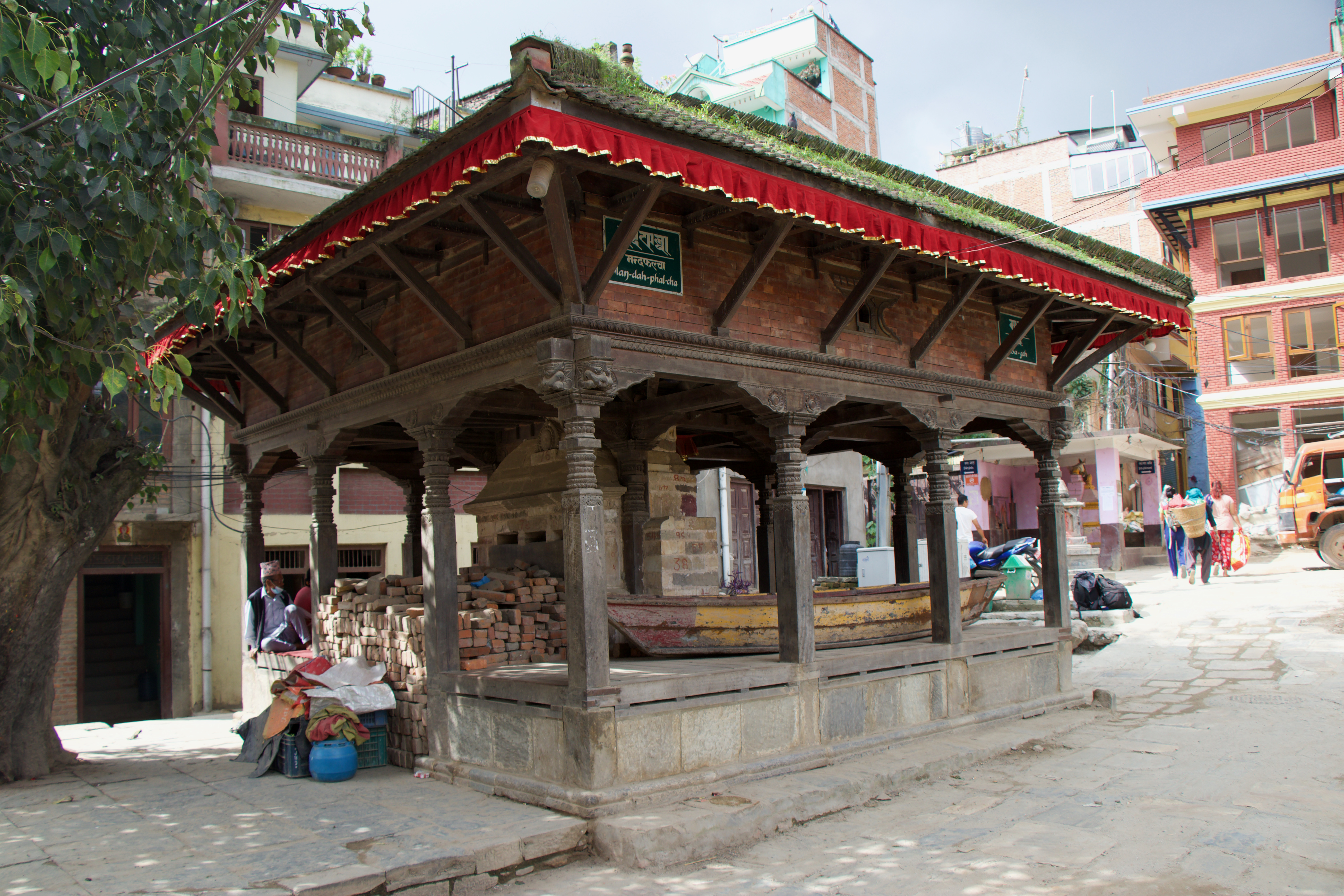Sāḥgaḥ Mandaḥ Phalcā, Kirtipur

The Sāḥgaḥ Mandaḥ Phalcā, located at the Sāgaḥ Ṭola in Kirtipur, is a unique form of arcaded platforms. For one, it is free-standing and square, with sixteen pillars on which the roof rests. Because of this, it is also called the Sorhakhuṭṭe “sixteen-legged” Phalcā. Moreover, because the square structure is said to contain nine maṇdaḥs, it is also known as Mandaḥ Phalcā. Another unique feature is that a water tank for drinking water - jaḥdhuṃ - is placed on the platform under the roof. Normally, such a tank can be found next to but not in a building. Below the jaḥdhuṃ's outlet is a statue of Bhagīratha. A śivaliṅga is placed right behind the jaḥdhuṃhiti.
Built in 1750 CE, the Sāḥgaḥ Mandaḥ Phalcā was constructed in memory of a deceased father from an Amatya family from Dathu Ṭola. It probably collapsed during the Great Earthquake of 1934 CE. Until 2008 CE, only a square plinth along with the śivaliṅga and the jaḥdhuṃ remained when the Department of Archaeology reconstructed the Phalcā under the supervision of Sukra Sagar Shrestha.
Pilgrims used to take the road in front of the Phalcā for their pilgrimage to the Mātātīrtha on Mātātīrtha Aũśī (the new moon day of the dark fortnight of Vaiśākha). Until the late 1970s, local youths used to fill up the jaḥdhuṃ to provide drinking water to the pilgrims and offer them pāṃti (a mixture of water and coarse brown sugar) on a particular day. This tradition ended in the 1980s. The road also used to be a section of the trade route for the merchants of Citlāṅga (Chitlang) who travelled to Kathmandu and Patan via Kirtipur until the late Rāṇā period. Travellers and merchants presumably took shelter at this Phalcā and quenched their thirst from the jaḥdhuṃ.
For more information about Sāḥgaḥ Mandaḥ Phalcā, please visit DANAM.
